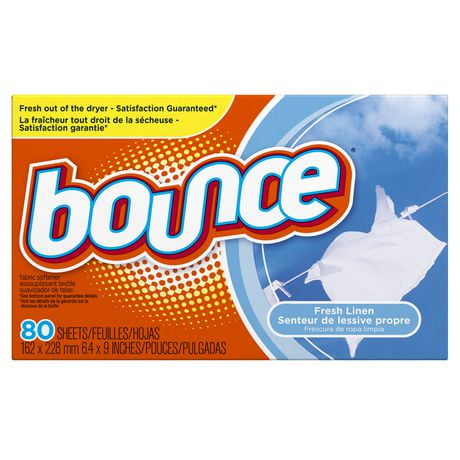 So, when we aren’t putting bees in vaginas, we’re avoiding
the deadly toxic dryer sheets. Did you know that your drier sheet is spewing
deadly, toxic stuff into your clothes? You’re breathing that in. Your kids are
breathing that in. You are a terrible person. But not to worry, the dryer
sheets will kill you soon. Oh, what’s that? I’m writing about it, so it must
not be true? Well yeah, but this guy is called Dr Axe, why shouldn’t we believe
him…he’s a doctor.
So, when we aren’t putting bees in vaginas, we’re avoiding
the deadly toxic dryer sheets. Did you know that your drier sheet is spewing
deadly, toxic stuff into your clothes? You’re breathing that in. Your kids are
breathing that in. You are a terrible person. But not to worry, the dryer
sheets will kill you soon. Oh, what’s that? I’m writing about it, so it must
not be true? Well yeah, but this guy is called Dr Axe, why shouldn’t we believe
him…he’s a doctor.
The appropriately named Dr Axe published an article entitled Stop Using Dryer Sheets Immediately! – that’s all the information I need.
Again, he’s the doctor.
“Dryer sheets are
really a toxic ripoff. That means you’re paying more for a product that could
actually be making you sick.”
*Phew* I thought as I slowly recall I don’t use them. I am
going to live. I was going to stop reading there. But for the sake of telling
all my friends about how they will die I read on. He tells me dryer sheets are
a ‘cocktail of chemicals’ (pretty much like all things, but let’s ruin this
with science, he may be onto something). He finds an interesting (his word, not
mine) study (again, his words) by Steinemann, (you'll note; not a chemist, biologist or medical professional - a theme throughout this) looking at the chemicals ‘spewing’ out of dryer
sheets. What did they find. Get this: 7, yeah as many as 7, air pollutants. He
lists two of these to slag off throwing the work carcinogenic around like a rag
doll, backing it up with as little source as possible and saying they’re not
safe at any level. He’s right in
saying they’re not safe. But in any level? No, - dose, the, makes, only, the,
poison – rearrange that, I have put that sentence in a separate order because I
am bored of typing it in the correct order.
There is always a ‘study’
The study he focuses on in this article is published in the Journal of Air Quality and Atmospheric Health.
Never heard of it? Me either. Any the study wasn’t really a study, it just referred
to the act of filling in a survey. So, no real science actually occurred. No
toxicity measurements. No adverse health measurements. Subjects were asked to
give incidences of when they were near some fragranced products, such as air
fresheners, lotions and dryer sheets. The caveat of this, is they used a total
of 1136 participants. So that’s a whopping 12.5% of ‘people’. By people, they
mean the 1136 within the study of course, which is 142 people. Let’s look at
this logically, we need confidence in results. Smelling something and getting a
headache is a 1+1=2 process. You presume instantly there is a causation.
However, factor in that headaches are not uniformly caused by just one thing
and that goes out of the window. There is, of course, the fact of recollection
bias. ‘I changed dryer sheets a while back, that was when I had that migraine
wasn’t it?’ must be that then – the two are hardly mutually exclusive.
Facts
Here are some other dryer sheet facts they have concocted –
picked at random:
In one mice study, fabric softening products triggered
limited airflow and pulmonary irritation in the animals studied. (7,
8)
Note how he says ‘one’ there and uses two sources. One study
does not make science. Anyway, this study titled Respiratory Toxicity of Fabric Softener Emissions exposed mice to
fabric softener products (thought this was about dryer sheets?) and the mice
couldn’t breathe – which is hardly the same as washing your clothes in fabric
softener and wearing them. You are exposing tiny mice to concentrated solutions
– this is about as loaded as studies get. I say this time and time again, if
you are stating something is doing something such as causing toxicity – you
need to have evidence for it. A trend needs to be set. That’s what systematic
reviews do. Don’t use one 17-year-old study to prove a point. Not going to
happen. They conclude with:
The results provide a
toxicological basis to explain some of the human complaints of adverse
reactions to fabric softener emissions.
No, they don’t. Let me reword what that should say:
The results here
provide a topic for further investigation. Scaling the concentration down to
common, everyday occasions in which humans would have contact with, unless they
worked in the fabric softener creating industry, would provide a better sense
(but not actual sense) of the toxicology involved with fabric softeners.
However, this has been previously studied, hence the legality of them being
regulated and sold. What we have done here is loaded and question and sought to
answer it, wasting time, money and inducing fearmongering among people
without an ounce of critical thinking skills. We are bad.
I’ll wait with baited breath for any amendments to this
study.

“In a study focusing
on hormone disruptors and asthma triggers in everyday products, Silent Spring
Institute researchers found dryer sheets contained some of the highest
concentrations of harmful fragrance chemicals. Compounds like acetyl hexamethyl
tetralin, isobornyl acetate and phenethyl alcohol also turned up”
Sola dosis facit venenum - I have taken to the latin version now. I mean, Isobornyl acetate is
used for a few medical purposes and phenethyl alcohol is just an extract found
in some flowers, such as the rose. The study itself does not say it found some
of the highest concentrations of harmful chemicals. Of course it doesn’t what
they hell would they compare it to?
"In 2009, nearly 10 percent of the general U.S. population
reports irritation from scents coming out of dryer vents. By 2016, that number
increased to more than 12 percent. (9)"
See the point above about the toxicity and frequency of
incidence when exposed to dryer sheets. This study’s methodology states:
"Data were collected
through telephone interviews from two geographically weighted, random samples
of the continental U.S. in two surveys during 2002-2003 and 2005-2006 (1,057
and 1,058 cases, respectively)"
They were asked broad questions like ‘do you get a headache
when you are near fragrances’ – no open-endedness there. So, 10.9% of those
people ‘recall’ being hassled by a scent, Yes. That’s fine. But that’s 230
people, not 10% of the general US population. If you google ‘us population’ it
gives you 306.8 million people for 2009. I don’t think that 230 people are
representative of that. And there is no mention of it growing in the study,
where the information that this has raised to 12% is nowhere to be found.
"Many dryer sheets contain chemicals that react with the air
to create formaldehyde, a probable human carcinogen."
Formaldehyde is found in a higher concentration in pears, and
in other foods. There’s a list here:
Sell, Sell, Sell
With almost any of the websites with articles like this, you
will get the hard sell. I’m not talking the ‘believe me its true’ hard sell, if
you’re reading it for any other purposes other than to send it to me or mock it
yourselves, they have you with the fearmongering. I’m taking about the product
sell. At the base of the article, there are suggested links to pseudoscientific
ways to get chemicals out of your washing. Including homemade laundry soap – a
link I am not going to click, because I know the only way to remove the
chemicals is to create a vacuum. I doubt that’s what it is. But no, you can buy
oils, and castile soap. I don’t know what castile soap is, I don’t even care to
want to know.
Conclusion
Dryer sheets are fine. A lot of the studies are ‘preliminary’
studies with bad methodology and little evidence. Chemicals break down when heated
up. Some are bad. Some are good. Inhaling these in the small quantities they are
released in will cause you no harm. If you have a reaction to a fragrance, it’s
probably an allergy or just a fragrance that you don’t like.
Disclaimer: Axe not a real doctor by way. His doctorate is in
Natural Medicine. So, don’t worry. You won’t see him in your local GP.